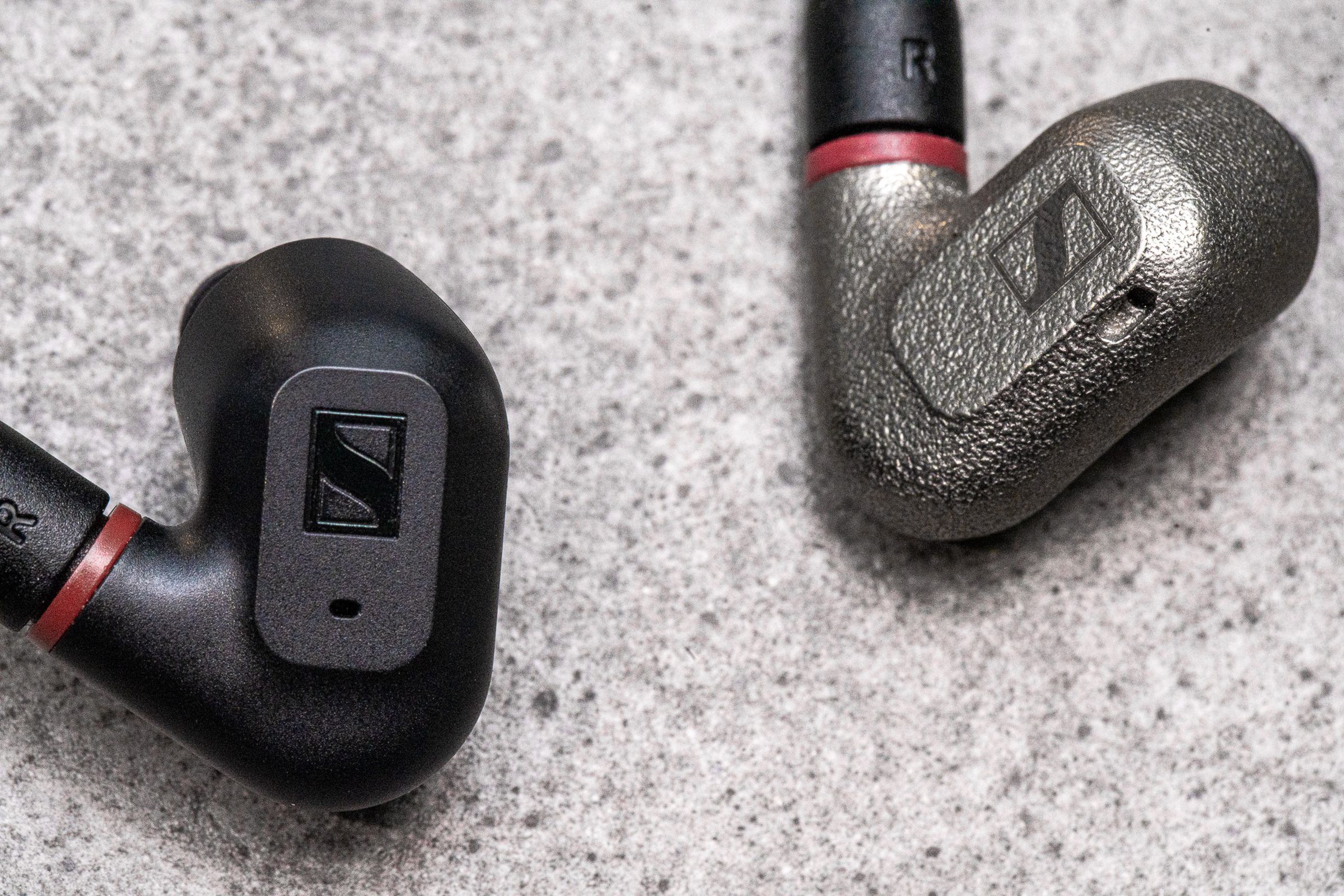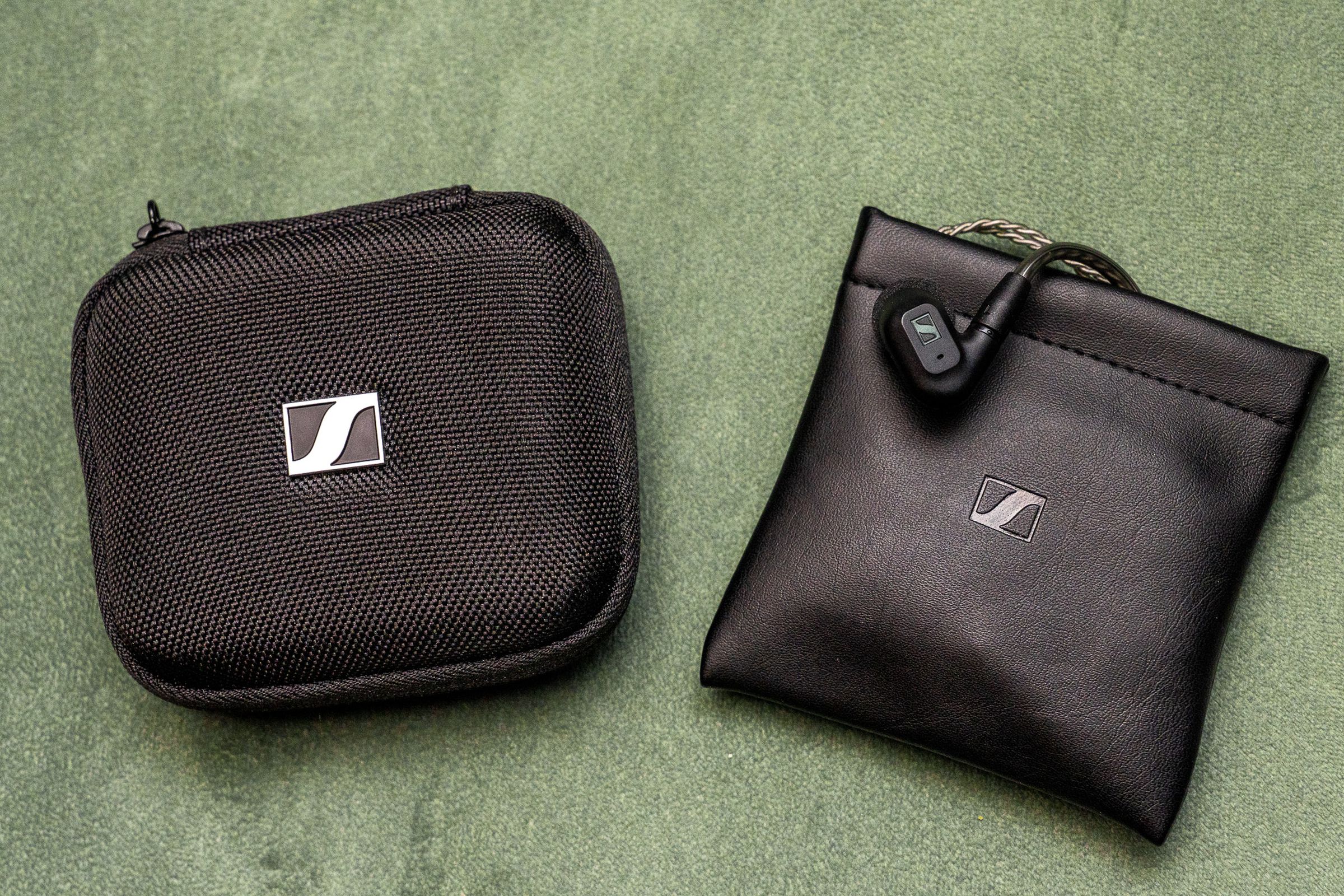Every so often, I just need a break from Bluetooth headphones. I get fed up with recharging them. Heaven forbid I accidentally put my phone in my left pocket while out and about instead of my right and start noticing audio cutouts. (Yes, this can still happen with today’s best wireless earbuds and phones.) And I remind myself that I’m robbing my ears of the true potential of my cultivated lossless music library by settling for Bluetooth codecs instead of going wired. I’ve been feeling that wireless fatigue lately, and it just so happens that Sennheiser just released a new pair of wired earbuds, the IE 200, that seemed worth trying out.
These $149.95 earbuds promise balanced, detailed sound in a compact in-ear monitor (IEM) with adjustable ear hooks and a detachable braided cable. There’s no built-in mic — these are music-only buds — and Sennheiser lets you choose between more or less bass through a unique “dual-tunable” ear tip design. In one position, the IE 200s add some punch to the low end. But mount their ear tips in the outer position, and the lower frequencies become more neutral.
How we rate and review products
The IE 200s borrow much of their DNA from Sennheiser’s $700 IE 600 earbuds — ranked among the crème de la crème of IEMs — and aim to deliver some of that magic at a more accessible price point. The company sent me a pair of the IE 600s to test alongside its latest buds so I could compare and contrast. But my focus while using these has been to keep things casual; I didn’t run them through a DAC or do much intense analytical listening at home. I just wanted to make my music time feel more intentional and deliberate. Wired headphones will always do that more effectively than a set of AirPods Pro or even Sennheiser’s own Momentum True Wireless 3. “It’d be nice if it meant something again,” I posited aloud at the coffee shop — probably alarming the person sitting nearby who heard me say that out of the blue.
The way I consume music varies based on what phone I’m currently using. If it’s an iPhone, I’ll be carrying around thousands of music tracks encoded in Apple Lossless Audio Codec (ALAC) that I’ve amassed through the years. I always want to have my favorite albums within reach, no matter what my current Spotify or Apple Music subscription status is. And I’ve tried to preserve my personal collection in reasonable quality without going too overboard; if I ever need high-resolution lossless audio, I’ll turn to Amazon Music or something like Qobuz.
When I’m using an Android phone, where ALAC is somewhat out of place, I’ll mostly stick to Spotify, Amazon, and personal library stuff that I’ve uploaded to YouTube Music. (I really can’t recommend that service enough for storing your hard-to-find tracks in the cloud. It doesn’t do any of Apple Music’s mistake-prone track matching nonsense and uses only the files and track metadata that you feed it. If you’re a nerd like me who’s meticulous about that stuff, it’s great — and free.)

But the dilemma in either scenario was the same: I quickly crash-landed back in our modern reality where the headphone jack doesn’t exist on popular smartphones. So I swallowed my pride while testing the IE 200s and made sure to carry two dongles with me at all times: a 3.5mm-to-Lightning adapter for my iPhone 14 Pro Max and a USB-C equivalent for my Pixel 7.
The differences between the IE 200 and much pricier IE 600 begin right out of the box. The 600s come with a hardshell case, while the 200s fit into a soft carrying pouch. The nicer case has enough spare room for a backup / replacement cable, but that’d be a tight fit in the pouch. Both the IE 200 and IE 600 include six sets of tips: three sizes of silicone and three foam alternatives. I’m a foam person whenever given the choice, and the largest size did me fine throughout all of my testing.

The two sets of earbuds share the same outer casing shape and are very similar in size, but they use different materials. The IE 600s are made from a really neat hand-finished 3D-printed zirconium shell that will probably look as good in five years as it does today. Sennheiser wasn’t about to match that level of craftsmanship with the mainstream IE 200s, so it opted instead for a stealthy all-black plastic shell. It might not age as gracefully, but it still looks sleek. In both cases, the earpieces were nicely compact and sat snug and flush in my ears. They’re both plenty secure — especially with those foam tips. Sennheiser has done an excellent job with ergonomics here: the IE 200s fit me naturally and comfortably in a way that not all earbuds do, and my glasses weren’t an issue for the adjustable ear hooks.


The braided cable bundled with the IE 200s was super lightweight and basically felt like nothing as I was wearing them. That’s a good thing, but the cord isn’t immune to microphonics and jostling noise when you’re on the move. Like Sennheiser’s other IEMs, these attach to the cable using MMCX connectors, but the recessed connector design on the earpiece could pose a problem for some aftermarket cables; make sure they’re specifically compatible with Sennheiser’s products.
Sennheiser describes the IE 200s as “exceptionally neutral,” but that’s not accurate. Turns out, a neutral presentation just isn’t very exciting to a lot of average consumers, and these definitely share a V-shaped sound signature that’s similar to the IE 600s. The bass boost on the less expensive earbuds is inoffensive and never veers into bloated territory. Everything is well controlled, which extends to their balanced mids and elevated treble frequencies. The IE 200s are articulate, detailed, and an enjoyable listen.
But you’re not exactly getting the same experience as from the already renowned IE 600s. Despite these two sets of earbuds sharing a similar frequency response, you don’t need fancy audio gear to notice that the more expensive pair has a smoother, more dynamic tonality to them. The sub-bass hits a little fuller. Everything feels richer and less clinically sharp than on the IE 200s, and the soundstage is less condensed. The IE 600s have just that extra touch of warmth and authority to them. There’s a reason these buds are separated by hundreds of dollars, but I still believe the $150 IE 200s are a good option if you’re looking to spend a bit on wired earbuds. You won’t be as concerned with babying them, and they sound plenty good. I’m not here to debate whether “Chi-fi” IEMs are a smarter buy; I’m sure you can find all sorts of debates about that across headphone forums and on YouTube.
But I will say that Sennheiser’s “dual-tunable” ear tip concept seems very gimmicky. Most people will seat the ear tips flush with the casing, and that’s where the IE 200s perform their best and are more bass-forward. To cut back on that low end for the “analytical” listening mode, you need to pull the tips forward to a secondary position. The easiest way to do this is to fully remove them and put the tips back on very gently; they just sort of catch naturally at that initial outer position. Push more, and they’ll move to the bassier seating. The problem is that it’s very easy for the tips to move as you’re putting the IE 200s into your ears, so if you want the light bass tuning, you’ve got to be careful. In the end, it’s not worth it: these earbuds sound better with fuller bass, and this idea seems a little too clever for its own good.

Agree to Continue: Sennheiser IE 200
Every smart device now requires you to agree to a series of terms and conditions before you can use it — contracts that no one actually reads. It’s impossible for us to read and analyze every single one of these agreements. But we started counting exactly how many times you have to hit “agree” to use devices when we review them, since these are agreements most people don’t read and definitely can’t negotiate.
Well, would you look at that. Since these are regular old earbuds, there are no software agreements to worry about — no data harvesting of your personal information and usage habits. What a breath of fresh air.
Sennheiser backs the IE 200 earbuds with a two-year warranty.
Final tally: zero mandatory agreements.
It’s been nice getting reacquainted with wired earbuds while reviewing the IE 200s. I still bemoan dongle life, and it can be awkward when I occasionally forget that there’s no mic on these when answering a call. But neither of those things is enough to stop me from occasionally pushing aside Bluetooth earphones — even for all their conveniences — and plugging in. When I take the time, that’s still when I feel the most connected to the music I’ve loved for decades and where it sounds the best. I’ll still grab my preferred wireless earbuds on most days; that’s not going to change. But if you pick up Sennheiser’s newest earbuds, you might find yourself enjoying the same occasional reprieve from our wireless world.
Photography by Chris Welch / The Verge
